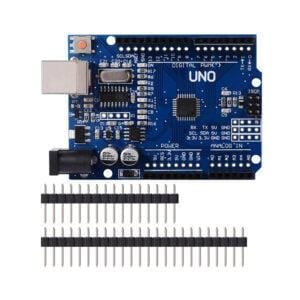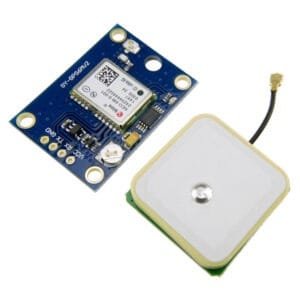Description:
The Arduino Leonardo is a microcontroller board based on the ATmega32u4. The Leonardo differs from all preceding boards in that the ATmega32u4 AVR microcontroller has built-in USB communication, eliminating the need for a secondary chip (such as an FTDI friend, FTDI cable or the USB/Serial converter on the UNO). This allows the Leonardo to appear to a connected computer as a mouse and keyboard. The Leonardo is Arduino’s first development board to use one microcontroller with built-in USB. Using the ATmega32U4 as its sole microcontroller allows it to be cheaper and simpler. This makes the Leonardo more versatile: in addition to supporting a virtual (CDC) serial/COM port interface. It also has other implications for the behavior of the board; these are detailed on the getting started page.
Leonardo’s IC is the ATmega32u4, which has all of the features of the ATmega328, an additional 0.5k SRAM, and built-in USB support. This board is only supported in the latest Arduino IDE 1.0.1 so you will also need to update the IDE. It’s not going to replace the Arduino Uno, but provide an additional alternative. It’s a lower cost Arduino board using only surface mount components and simpler circuit.
The maximum length and width of the Leonardo PCB are 2.7 and 2.1 inches respectively, with the USB connector and power jack extending beyond the former dimension. Four screw holes allow the board to be attached to a surface or case. Note that the distance between digital pins 7 and 8 is 160 mil (0.16″), not an even multiple of the 100 mil spacing of the other pins. Leonardo has 20 digital input/output pins (of which 7 can be used as PWM outputs and 12 as analog inputs), a 16 MHz crystal oscillator, a micro USB connection, a power jack, an ICSP header, and a reset button. It contains everything needed to support the microcontroller; simply connect it to a computer with a USB cable or power it with a AC-to-DC adapter or battery to get started (USB cable and power supply are not included). This board ships with the female header pins soldered in, as shown in the product picture.
The Leonardo is entirely SMD, where everything but the through-hole parts are populated on the board and already soldered. Leonardo customers will have to solder their own headers and power jack. This decision is fine, as it reduces the costs further, and people aren’t nearly as scared of soldering as they once were. SMD is honestly easier than through-hole if you have the right stuff, and with PID re-flow ovens and laser cut-able stencils at lots of hackerspaces, it keeps getting easier.














Reviews
There are no reviews yet.